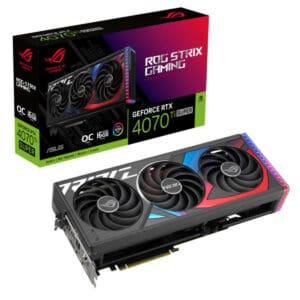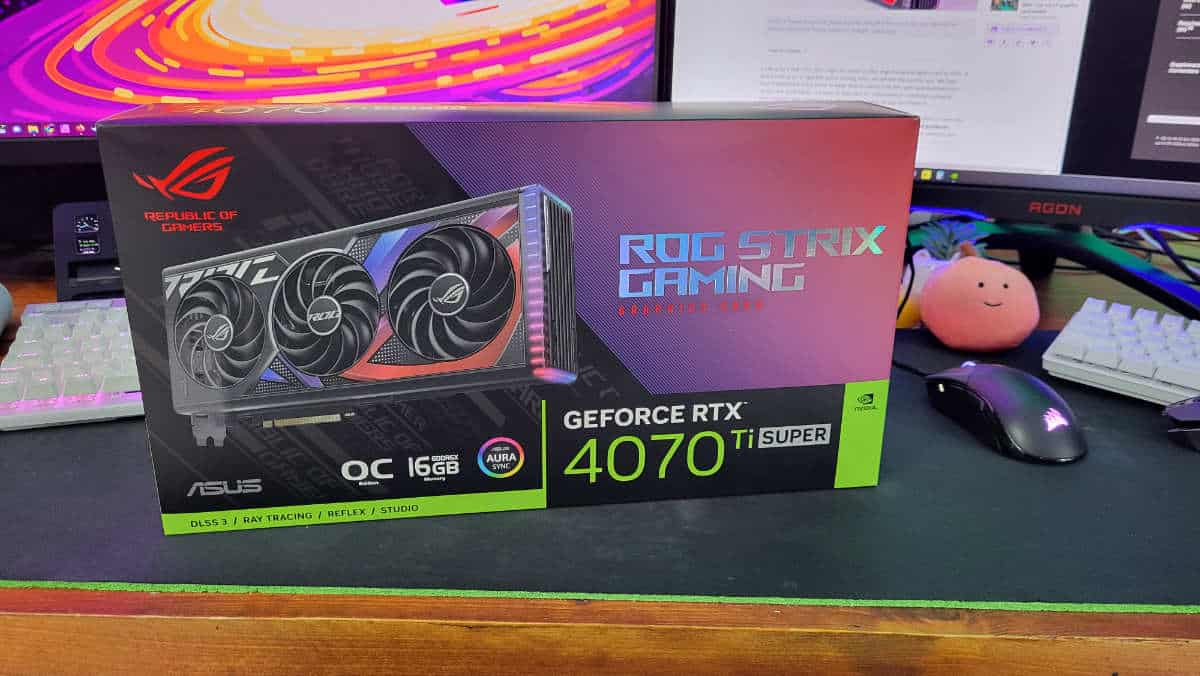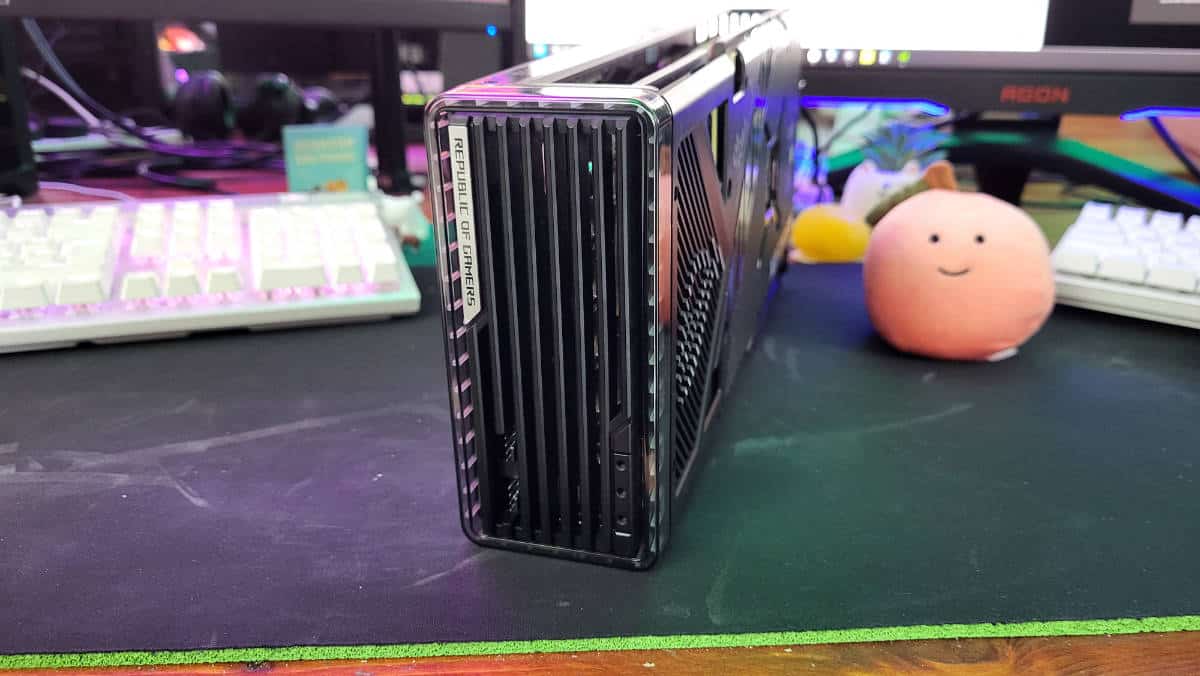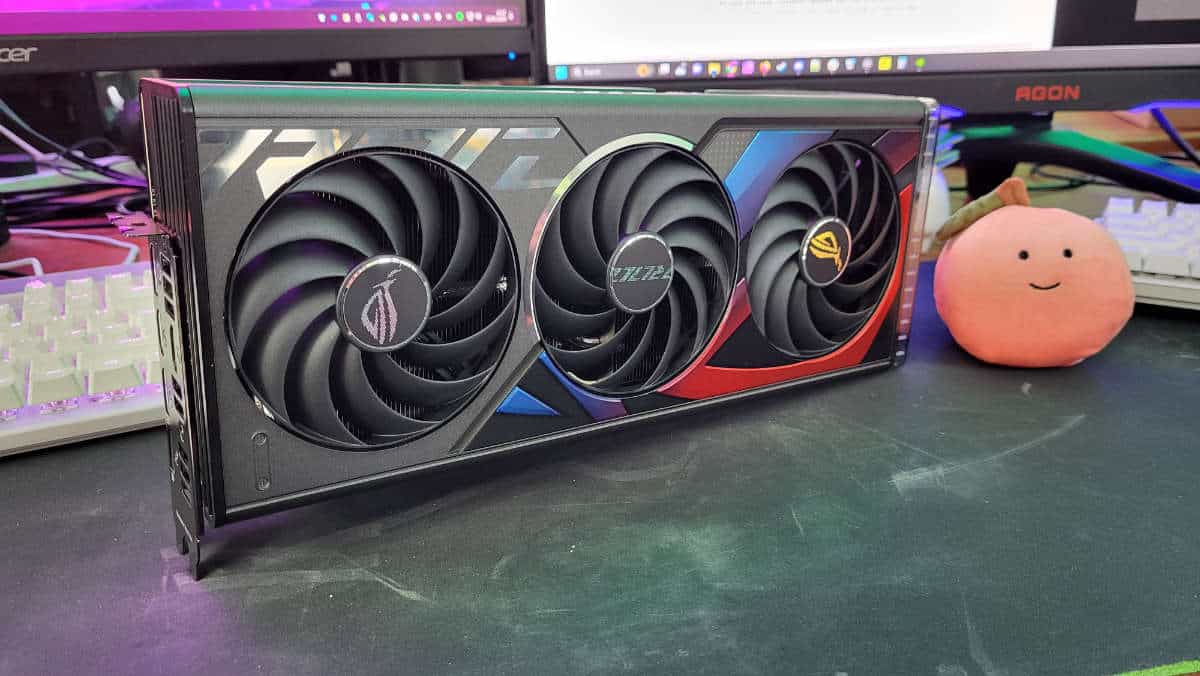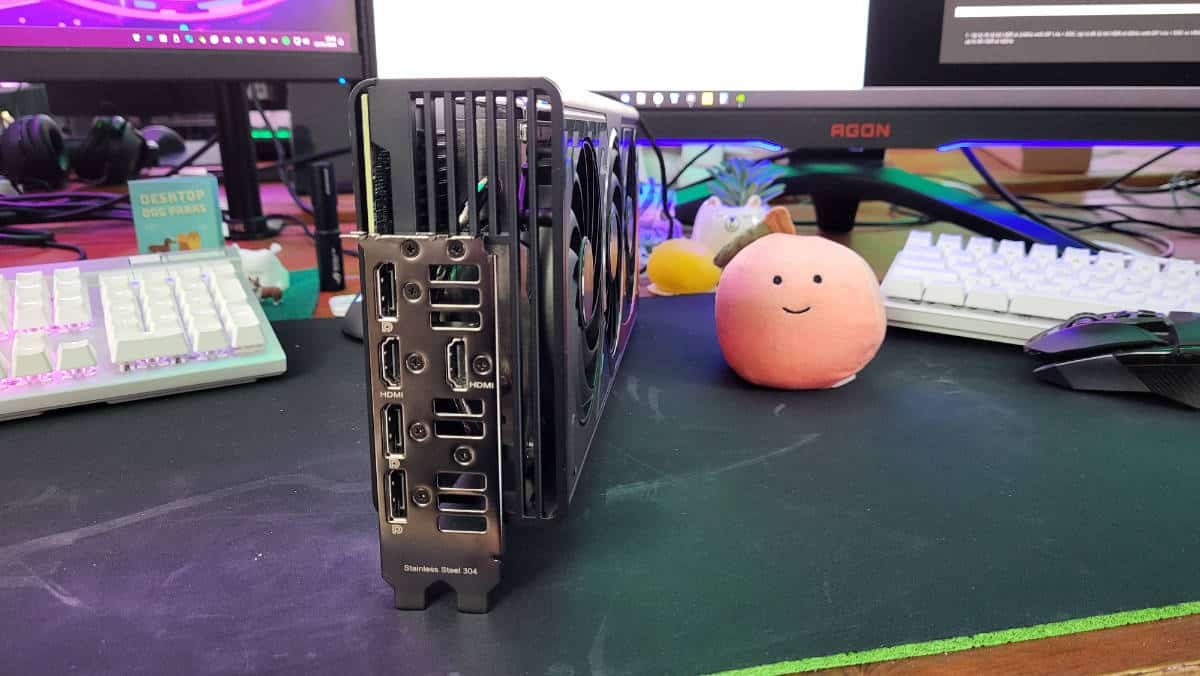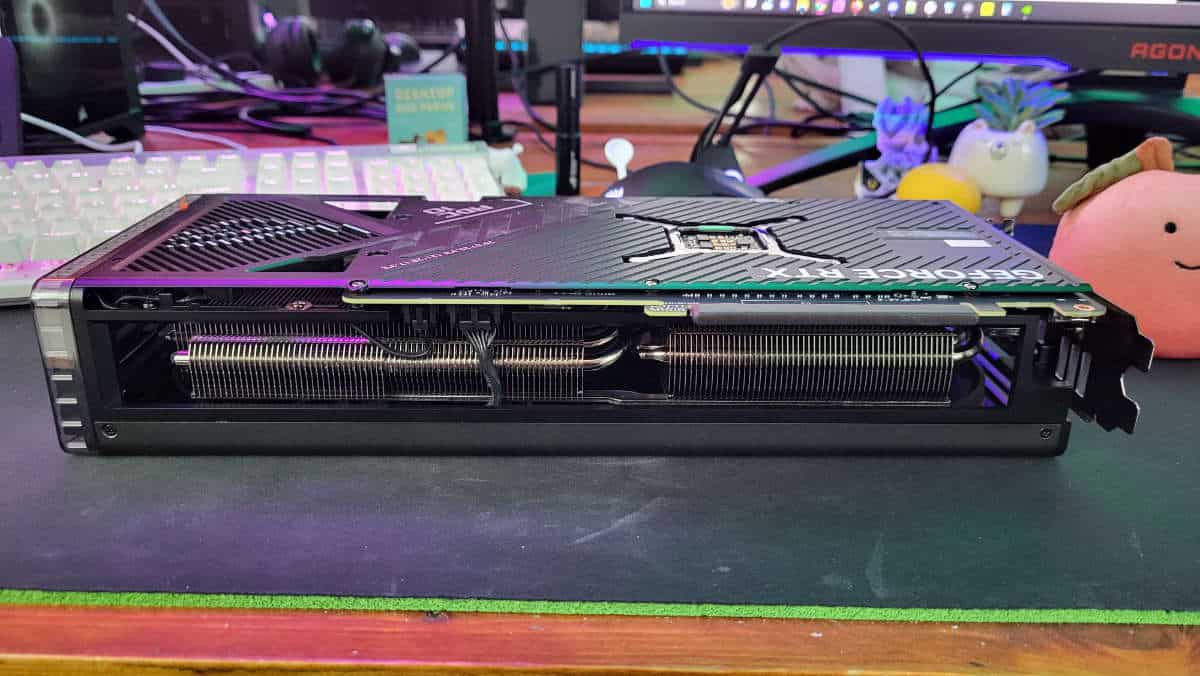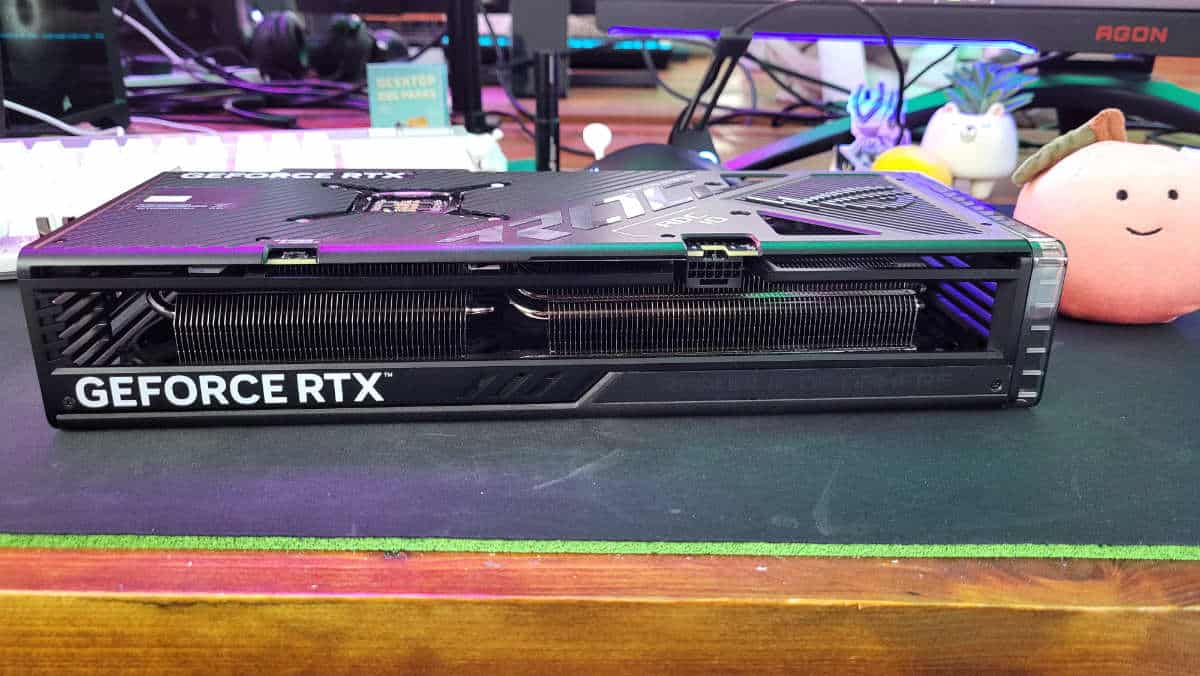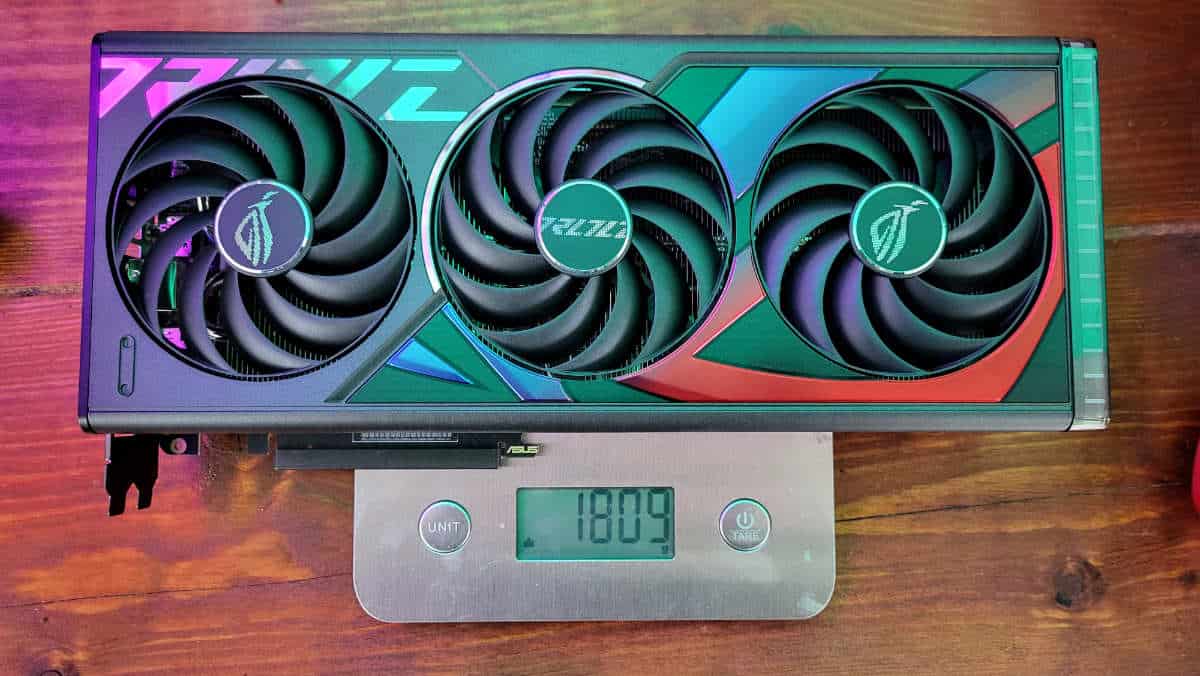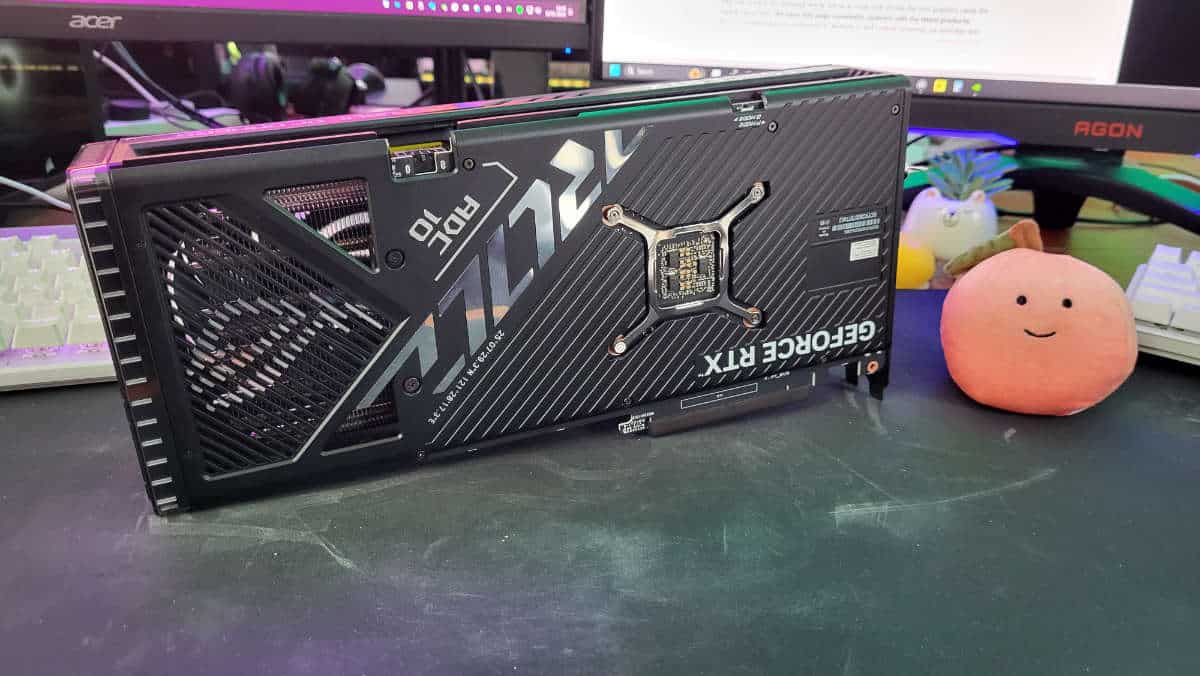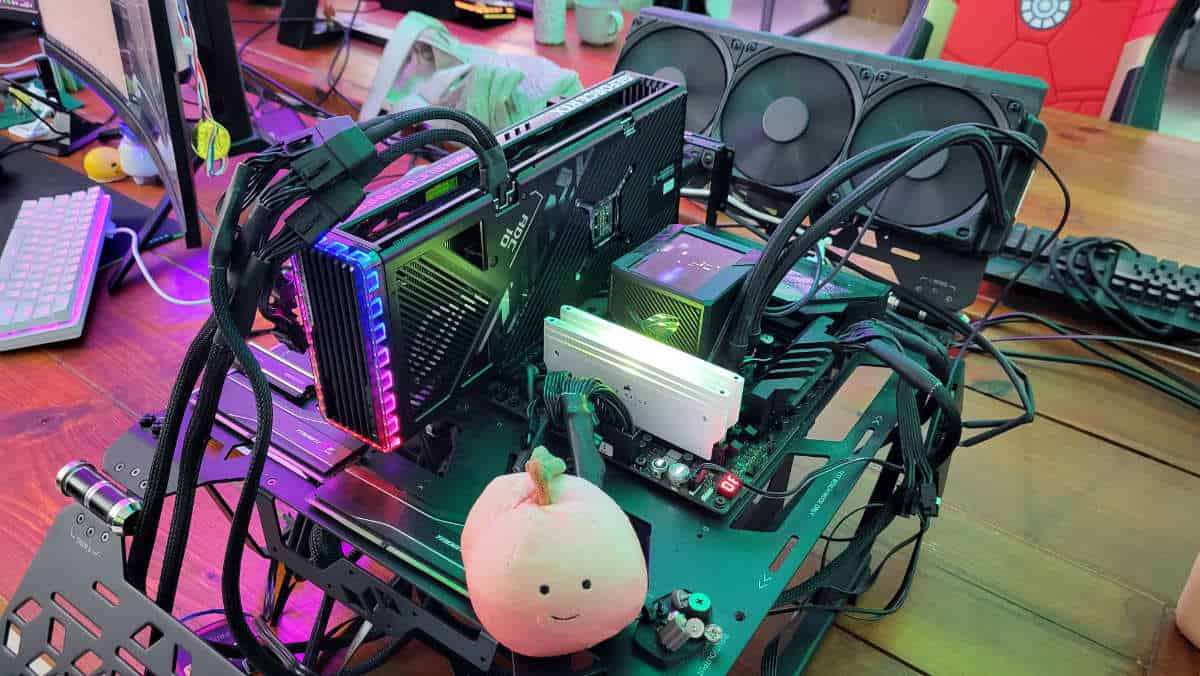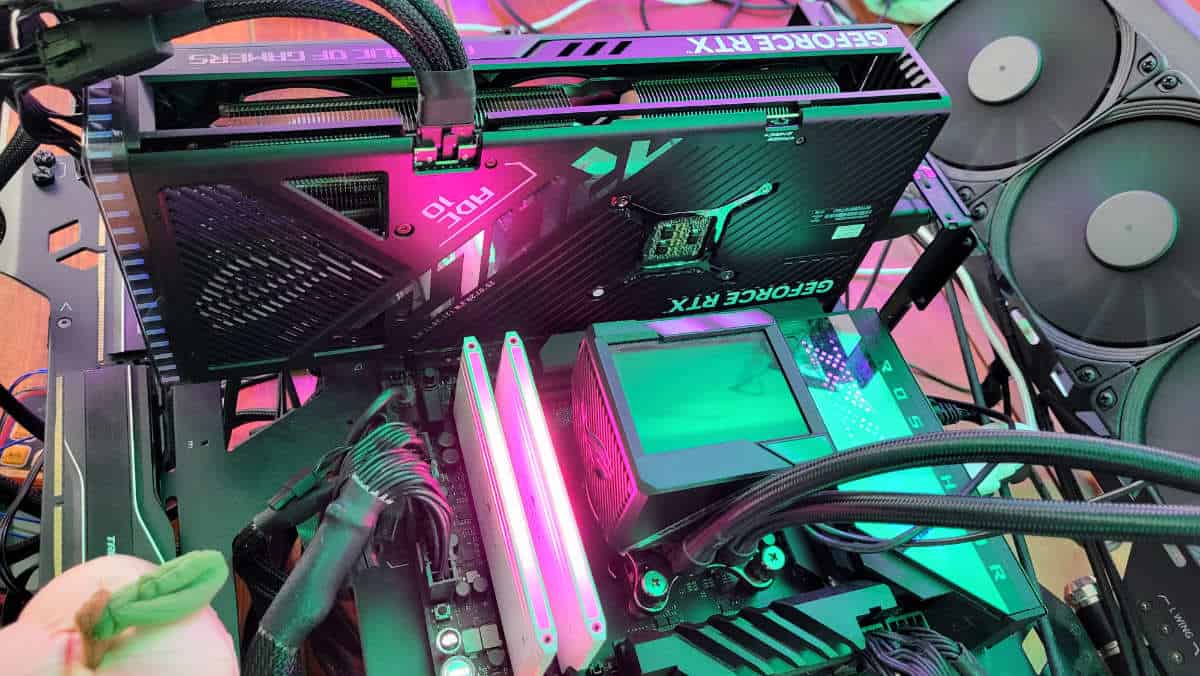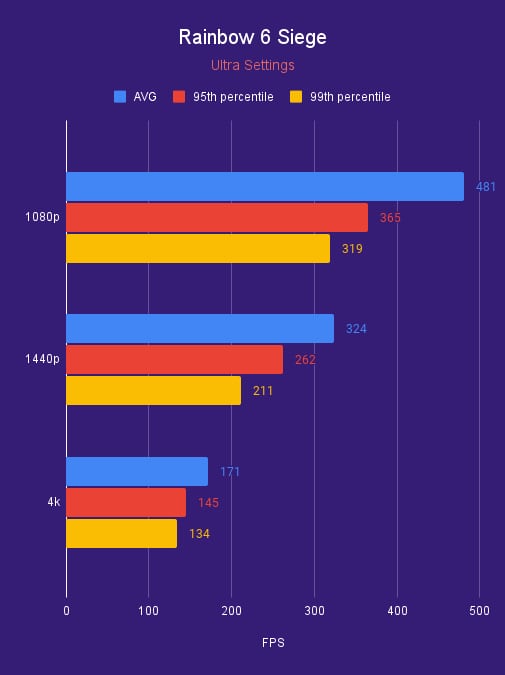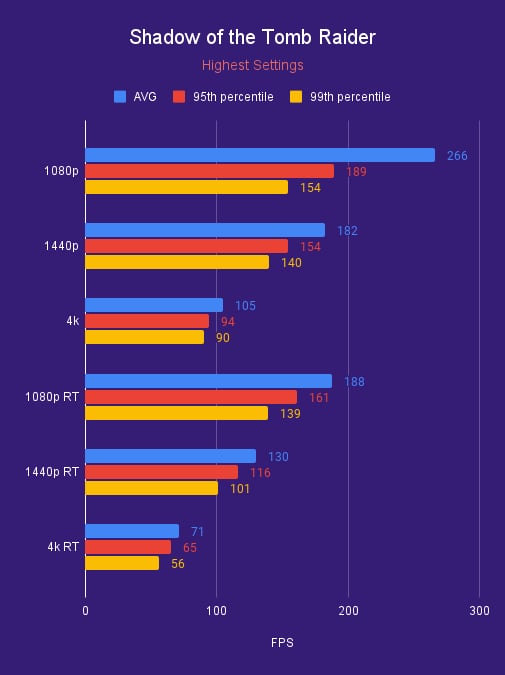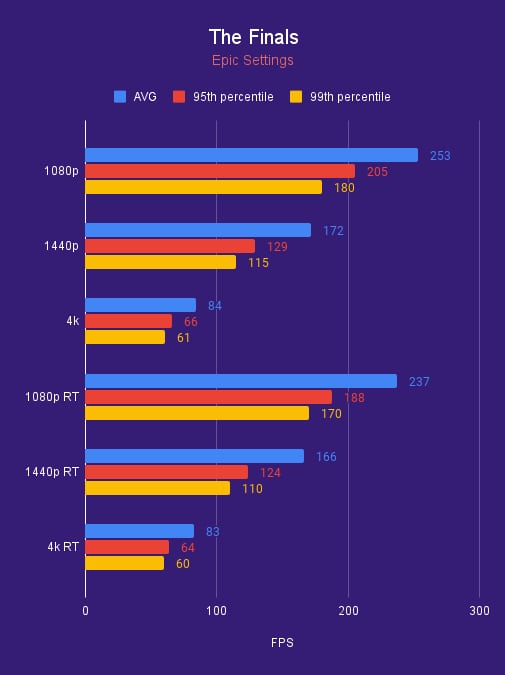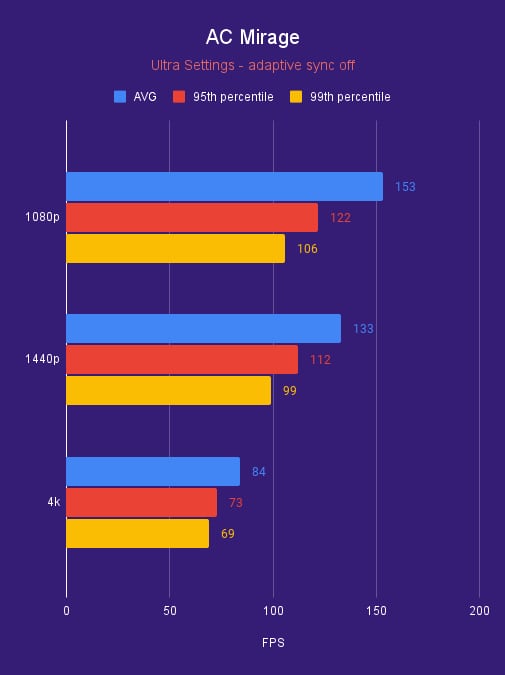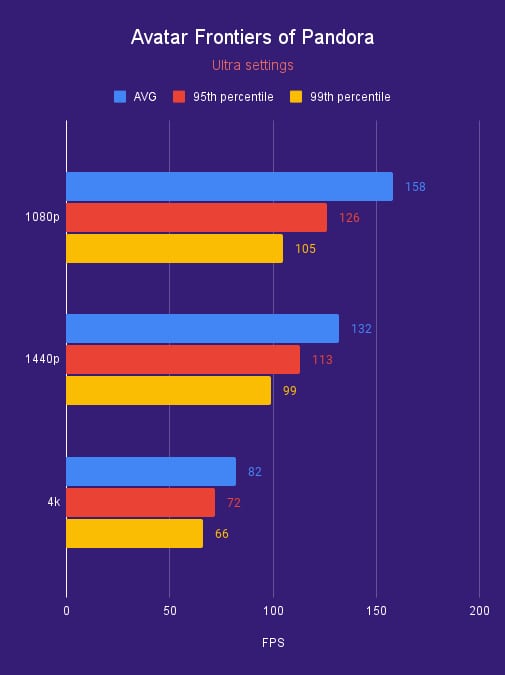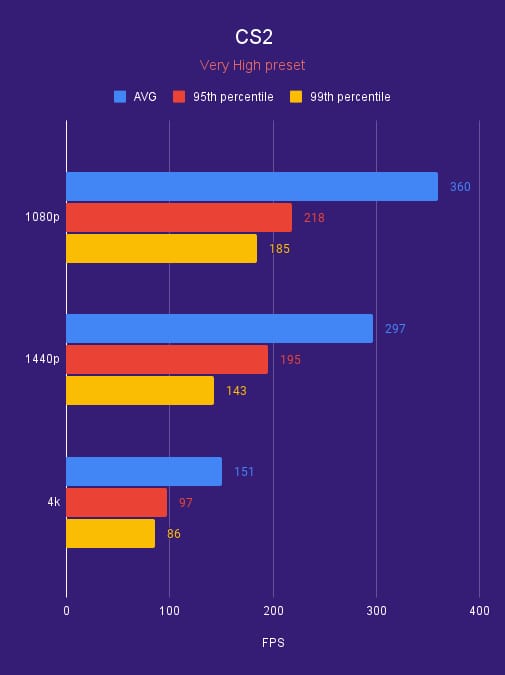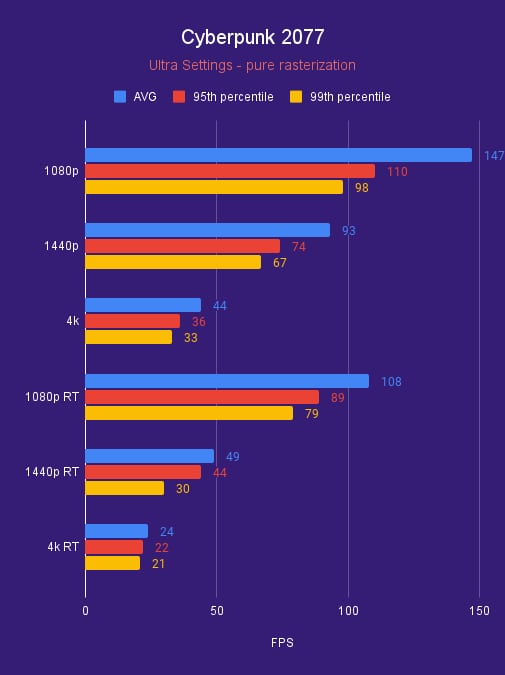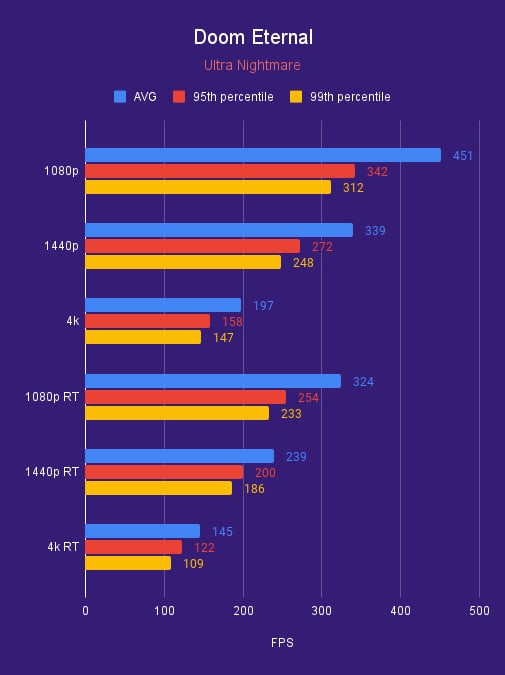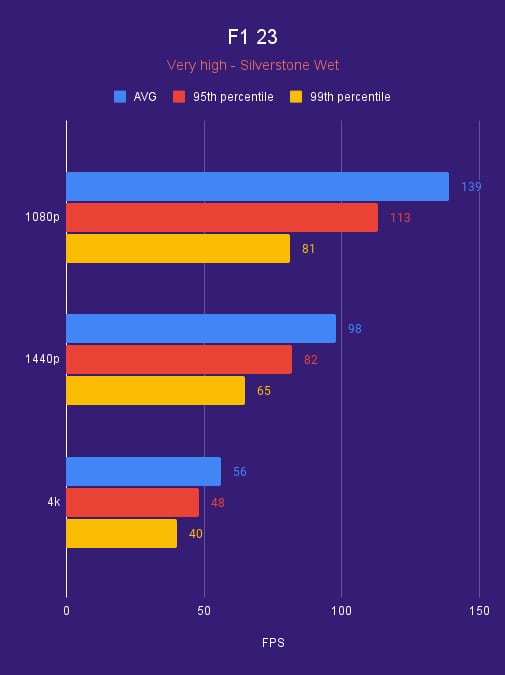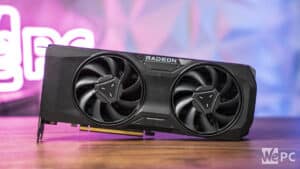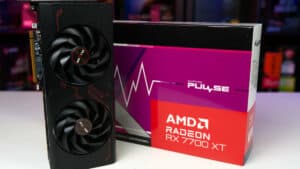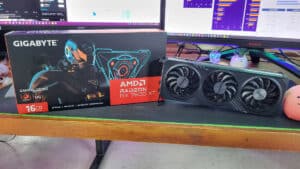ROG Strix OC RTX 4070 Ti Super review – Is the RTX 4070 Ti Super worth it?
As the 4070 Ti goes Super, we see how it holds up in our review
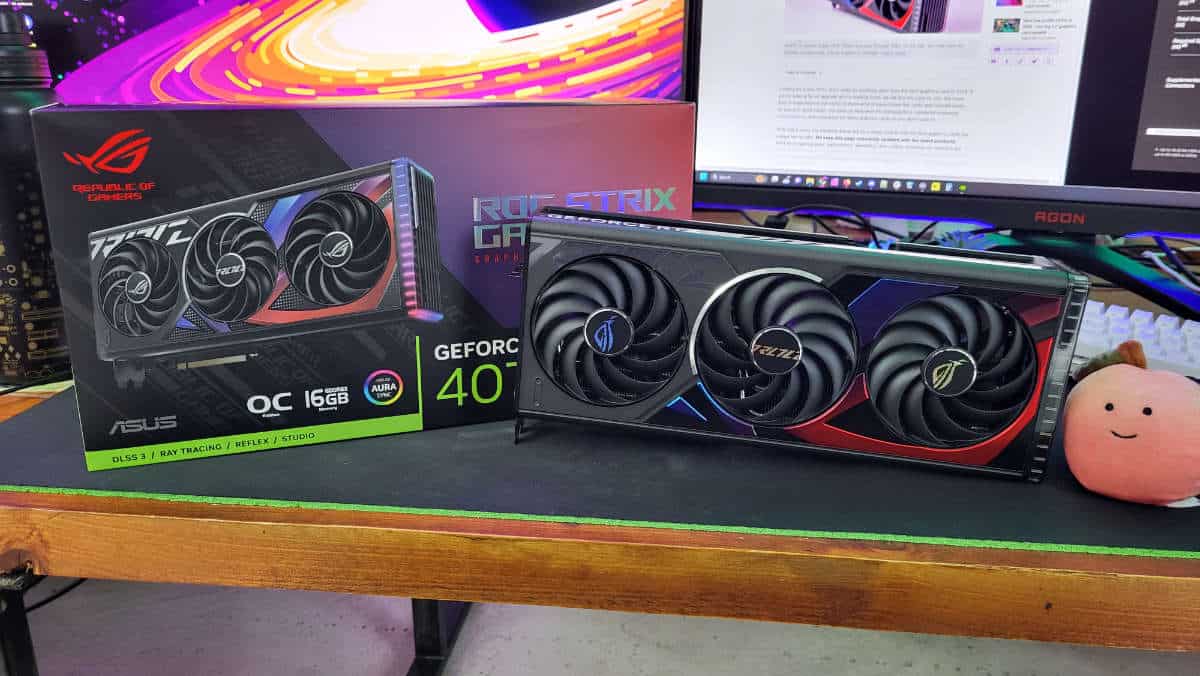
WePC is reader-supported. When you buy through links on our site, we may earn an affiliate commission. Prices subject to change. Learn more
Nvidia is Supersizing some of its Ada range of graphics cards, and now we are in the middle of those releases we get the 70 Ti upgrade. Hoping to bring more value and power to the choice of card, we see what the GPU has to offer, with our ASUS ROG Strix RTX 4070 Ti Super review.
Announced at Nvidia’s CES 2024 event after months of rumors, the 70 Ti Super could be the one to bring the biggest change and improvements out of the lot. When you compare the RTX 4070 Ti Super vs RTX 4070, you can see what kind of improvements it comes with. The biggest difference comes from the upgraded processor. Where the 70 model originally features the AD104, the Super upgrade brings it up to the AD103 SKU, matching up to the 4080 with a slight cut-down die.
But is it enough to save the series? Since the Ada range has come after the craze of crypto and shortages, it may have aimed too high. With high pricing, it had hoped for the same demand. But things didn’t quite pan out that way and the Nvidia GPUs became out of reach and seem to have lost all interest. So possibly the Super upgrade could be that necessary upgrade considering some of the original cards didn’t quite reach the mark and had their limits on them even at their high prices. But that might just change with the Super series, so does the 4070 Ti Super prosper and can it be the next best GPU?

ASUS ROG Strix RTX 4070 Ti Super OC
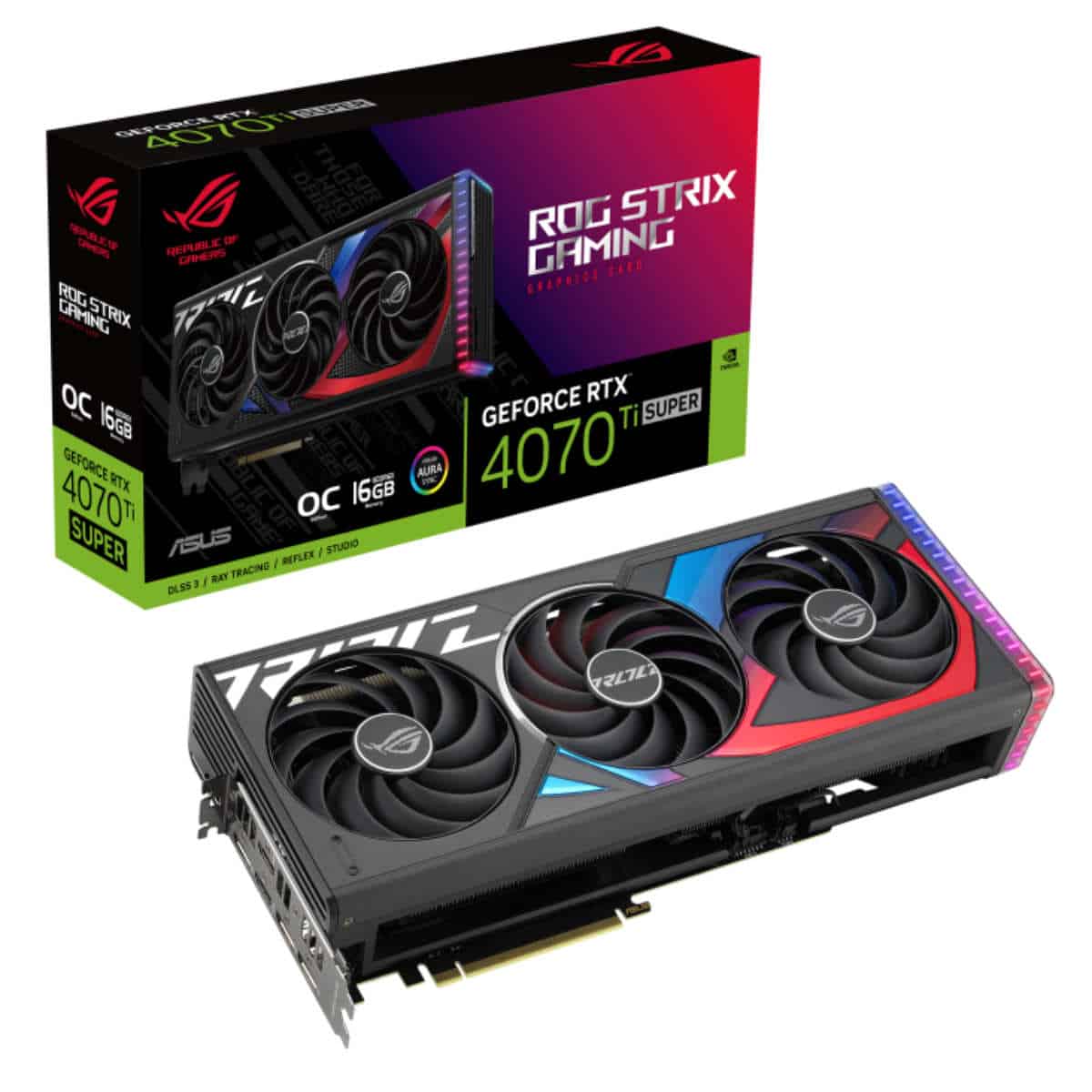
Core clock speed
2,670MHz boost, 2,340MHz base
CUDA count
8,448
Memory
16GB GDDR6X
Dimensions
336 x 150 x 63 mm ( 13.22 x 5.9 x 2.48 inch)
PSU required
750W
TBP
285W
RTX 4070 Ti Super pricing
The major point that the RTX 40 series surprised us with and made it unattainable and not worth it, is the price. Bumping up across the range, even though the specs and performance may have improved it’s not so much as you’d expect. In the 70 series, we saw this jump as the 4070 Ti increased the launch price over its predecessor massively. Increasing up to $799 over the $599 came with surprisingly big inflation even if the improvements were that great it seemed all too much considering the limitations there still.
Now the 4070 Ti Super specs have improved and made the change that we would have expected from the start. Staying at the same launch price of $799 as the 4070 Ti, it has come with a much better value. It still is a high price for a 70 series card and still comes even higher than the popular RTX 3080 choice from the Ampere generation. Even still, we see what it brings with it at that level and if it’s worth it now.
However, looking at the ROG Strix model itself, you can expect to be paying higher than the FE MSRP that Nvidia provides for its cards. As it is the top model from ASUS you do pay a premium for its top-notch cooling, design, and performance. You can currently see it on Best Buy priced at $999.99 (pre-launch) so you do get a 25% markup if you consider choosing this model of graphics card.
ROG Strix RTX 4070 Ti Super OC specs and design
Core clock speed
2,670MHz boost, 2,340MHz base
CUDA count
8,448
Memory
16GB GDDR6X
Dimensions
336 x 150 x 63 mm ( 13.22 x 5.9 x 2.48 inch)
PSU required
750W
TBP
285W
Memory clock
21 Gbps
Memory bus
256-bit
Card bus
PCIe 4.0 x16
Output
2x HDMI 2.1a, 3x DP 1.4a
Power connectors
1x 16-pin
- One of the top overclocks of the custom models
- Fantastic cooling solution with plenty of capacity
- Colorful and nice looking design compared to basic models
- Much too high a price over the recommended price
- Rather large dimensions
- Still utilizes a 12VHPWR 16-pin power connector
To start off, the RTX 4070 Ti Supers upgrade to the same die as the 4080 does bring with it plenty of upgrades. The AD103-275 processor brings with it an increase in the CUDA count up to 8,448. But also, quite importantly it changes the memory setup in the model. Upgrading up to 16GB of GDDR6X, as well as broadening to a 256-bit bus. In total bringing the bandwidth up to 672 GB/s, and making sure it keeps up with modern gaming and the ability to play at a 4k resolution. That is rather key for a card at this price level and one of the drawbacks of the original Ada 70 models.
As for the Strix model itself, there is a lot to enjoy from the card. Veering away from the dark and bland options around, it does bring an edgy and more colorful look to it. Cutting the darkness with hints of blue and red offers a more interesting choice out of the lot. That includes the end of the card surrounding the edge and also lighting up the model and inside of your case.
As for the rest, the graphics card, the front side features three axial fans with an alternating spin. There is also a diecast shroud, frame, and backplate for a rigid design that also works towards its cooling system. The over three-slot heatsink and card provide a great deal of cooling capacity. The vented back and sides allow all the hot air to escape and keep the GPU clock ticking at its best.
There are plenty of design additions in the Strix model as well. You get plenty of IO capacity in the card too, with three DisplayPorts but also two HDMI in case you need to lower pick. Whilst there is also a choice of BIOS with both performance and quiet modes for either top performance or keeping the noise down. But also at the end of the card, you can find fan headers so that you can run two fans or more with a splitter on the GPU temperature directly. Making much more sense as the GPU is doing more work while gaming compared to the CPU.
As for the drawbacks, you’ll find the card coming in rather in a large size. With a 336mm (13.22 inch) length and over three slot card, it’s neither small nor compact. Neither is it lightweight coming in at 1.81kg (3.99 lbs) it certainly fills a case and may require some careful consideration as to which one to pick for it. It also still has to feature the 12VHPWR connector, so unless you have a native ATX 3 power supply, it can be dangerous and not easy to manage the adapter that you’ll need usually.
ROG Strix OC RTX 4070 Ti Super performance
Now when it comes to what kind of performance you can expect from the 4070 Ti Super, as ever Nvidia compares it to the 3070 Ti and the 1440p performance. But at this level you and price point you’d expect 4k 60 at a minimum so we average a good selection of games to see how it holds up.
Our test setup:
- Ryzen 9 7950X CPU
- ROG X670E Hero motherboard
- Phanteks 1000W PSU
- Corsair Dominator Titanium 64GB 6600
- ROG Ryujin II 360 AIO CPU cooler
ROG Strix OC RTX 4070 Ti Super benchmarks
Here we get to see the 4070 Ti Super shine, it does do as intended and more. Throwing it in these games at the highest settings and with rasterization, and no upscaling gives us a look at its power.
CS2 starts with a solid 360 FPS average at 1080p, 297 at 1440p, and 151 at 4K. Ideal for those wanting high FPS but clear graphics as well. AC Mirage thrives with great graphics and high framerates with a 153, 133, and 84 FPS average. Avatar Frontiers of Pandora also has nice looks going for it, and a rather similar performance as Assassin’s Creed as it gets 158, 132, and 82 FPS at 1080p, 1440p, and 4K respectively. Whereas Rainbow 6 Siege as an Esports game gets much higher framerates. Here the 4070 Ti Super jumps to 481, 324, and 171 FPS.
For a mix of base and ray tracing performance, we have a few other games to look at. As the ever-demanding Cyberpunk 2077 is the heavy hitter. Without DLSS and ray tracing on Ultra you get 147, 93, and 44 FPS averages. Turning on the pretty lights to Ultra also crushes framerates, with a 108, 49, and 24FPS average. But the 40 series does allow you to get the most benefits with the usage of DLSS 3 to push that up without degrading the looks too much.
On the other hand, Doom Eternal provides the opposite of performance. With a 451, 339, and 197 FPS average without ray tracing. With flicking the switch lowering that to 324, 239, and 145 FPS. The Finals then shows a lower impact of ray tracing, as without at 1080p it averages 253 FPS, 1440p gets 172, and 4k achieves 184. But with epic dynamic lighting turned on, it only drops a few FPS with a 237, 166, and 84 FPS average respectively.
Shadow of the Tomb Raider gets a strong performance on the ultra settings. With a 266, 182, and 105 FPS average without ray-traced shadows. But with those on, that drops to 188, 130, and 71 FPS. Lastly, F1 23 is a bit more demanding when put on very high and driving in Silverstone in the wet. With a 139 FPS average at 1080p, 98 FPS at 1440p, and 56 FPS average at 4k.
As for more work and rendering-focused benchmarks, you can read the review on PCGuide to see how the 4070 Ti Super fairs in those workloads.
Is the RTX 4070 Ti Super worth it?
Overall, the RTX 4070 Ti Super is worth it. Certainly much more than the original 4070 Ti, it brings plenty more value and potential for long-term running. Especially as it is much more comfortable to achieve 4K gaming. It still comes with an inflated price especially generationally, and it feels more like a bait and switch when comparing it back to the initial 70 Ti launch, where held back with its specs, the Super compensates.
Considering the 16GB and bigger bandwidth for it, that should cover you in the long term when trying to play at 4k, but with the improvement games are seeing it might change down. But for now, it has become a lot more worth it.
As for the Strix model itself, we don’t see the worth. With a much higher price, you can find a next tier of GPU instead, or even the likes of a top AMD GPU that can get better performance instead. Although we do see the appeal of the design and cooling in general that provides a nice desire for it.

ASUS ROG Strix RTX 4070 Ti Super OC
